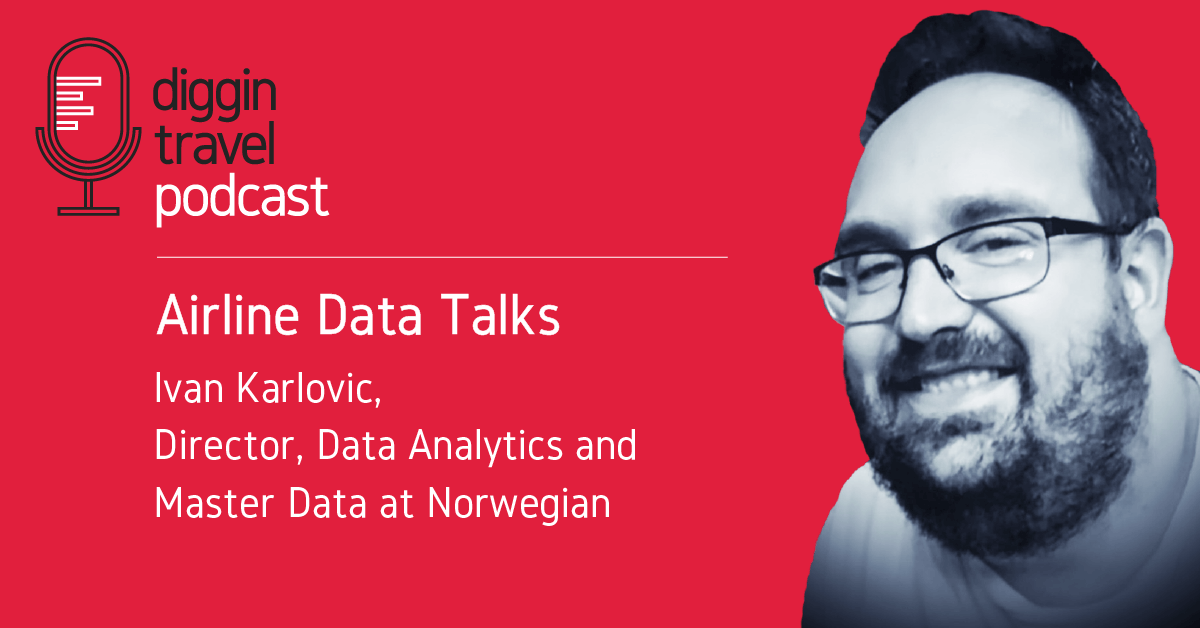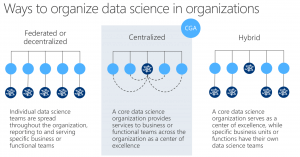Select Sidearea
Populate the sidearea with useful widgets. It’s simple to add images, categories, latest post, social media icon links, tag clouds, and more.


hello@youremail.com
+1234567890
+1234567890
Populate the sidearea with useful widgets. It’s simple to add images, categories, latest post, social media icon links, tag clouds, and more.


Iztok Franko

Earlier this month, we started a new podcast series where we talk to airline professionals. In our first episode, we talked to an airline digital expert from Wizz Air. The next topic we wanted to talk about is data and analytics, so here is our first airline data talk.
Data and analytics are a hot topic among airlines and we see many airlines investing in this field, despite the challenges that came with the COVID pandemic. When we analyzed the most sought-after airline jobs for our 2021 Airline Digital Trends report, data and analytics ranked at the top. Finding actionable insights in data and being proactive are crucial in order to understand your customers and if you want to do well at airline digital retailing.
Data Architect, Data Engineer, Data Scientist, Data Analyst, and Customer Intelligence are the typical data roles we see on our Airline Digital Job Board. These kinds of data roles sounded futuristic five or ten years ago, but are now integral to how airlines operate. How (and why) airlines are building internal data teams and how they’re putting all these new data roles to work has intrigued me for a while. You can read our case study about EL AL Israel Airlines and its data journey here. In our new podcast, we talked to Ivan Karlovic, who is in charge of building the data and analytics team at Norwegian.
Listen to the new episode of the Diggintravel Podcast about how Norwegian is building their airline data team via the audio player below, or read on for key highlights from our talk with Ivan:
And don’t forget to subscribe to the Diggintravel Podcast in your preferred podcast app to stay on top of airline digital, innovation, and analytics trends!
The first question I asked Ivan is why they’re building an internal data team at Norwegian. For Ivan and Norwegian, “why” was not a real question. They’ve moved past the discussion of whether they should use data or whether analytics is worth the investment.
Data allows you to do a lot of things. Before joining Norwegian, I was a customer of Norwegian, and you can see how much knowing the domain, aviation, the whole finance thing, pulling those huge orders and how that impacted competitors, etc. You can get very far and very advanced without even using data as your central source of those things. Data can definitely come on top and, as we’ve seen over the past few years, I think we’ve mostly moved past the discussion of should we use data or is analytics worth it, but you’re actually moving to just executing on it.
I would say even before I joined Norwegian – it was at probably one of the worst times because I started in April 2020, 17 days after the Norwegian lockdown – even then, I would say the executive leadership had a very clear idea. “We know this is important for our future; even though now there are very difficult days, let’s not ignore it.” If we want to be running out of the gates when COVID is – I would say it’s now being suppressed to some reasonable levels. So even then, they had the knowledge and the vision that doing analytics even at your most difficult times is still something that’s going to return great value for you in 2021, 2022. It was really great to see that we were able, of course at lower scale, to still progress towards that vision to have the most advanced technological platforms that we have, great people in our teams to be able to solve these use cases. I would say COVID of course impacted huge things in the industry, but Norwegian leadership always had that vision. It’s worthwhile to invest in this area.

Source: www.norwegian.com
OK, we can agree with Ivan that most airlines understand the value of data and analytics. But you probably don’t see so many investing in specific data science roles and building internal data teams. What was the reason for Norwegian to build their team in-house?
I’ve seen both sides of that approach. I’ve seen situations where consultants are brought in, very high skill, etc., hopefully with at least some domain knowledge. In some cases it was fantastic coding skills but zero domain knowledge. Then you have to onboard them to your domain and vision. But I’ve seen situations where I came to an organization and the consultants had just left prior to that. Nobody really took ownership of what they delivered, so they might not even deliver something good, but it was lost in this transition phrase. There was no clear documentation.
Typically in times before JIRA run confluence, etc., it was even more – maybe you’ve got a semi-decent Word document to look at something, but possibly not able to ask anyone who developed it. Again, talking to many of my peers and leaders, it was always the ambition to build a very strong in-house team because we do not expect to be able to solve everything on our own, but still to have the competence to tackle 80% of the use cases that deliver probably 90% of the expected value.
And hopefully after low-hanging fruit and some of the obvious things, we can reach a certain level of a computer vision type of thing, augmented reality type of use cases. Sure, it probably would be more efficient to bring in somebody from the side who has that type of technical competence for that specific use case alone, and then you can take it from there. But I still believe because of ownership – basically, you have enough to do to have an active team working on it, not 24/7, but from day to day, it’s really worthwhile to keep that team and nurture that data culture.
My next question for Ivan was: what kind of roles are they insourcing? What kind of profiles and roles are they looking at?
Lately we’re moving towards a cloud-based analytical platform. I can say we chose AWS this spring. I wanted to make sure we can do an end-to-end pipeline. Of course, we’ll still have great colleagues from IT doing maybe some sys integration, etc., bring the data to the platform in the best possible way, but once it’s on the platform I want to have an end-to-end capable team.
So we went out to get data engineers, of course data scientists, and we’ve been playing around with the concept of something in between like an ML Ops operations-oriented type of role. Also somebody with machine learning engineering, potentially also to tackle some of the more simple computer vision type of use cases – again, to be able to prep the data, crunch it in the analytical form, test it, verify it, deploy it, monitor it, etc., so that we can actually take charge of those things.
Ivan’s point about having end-to-end capabilities to be agile, fast, and independent of IT was interesting. With these capabilities in mind, I was curious about what kind of use cases they’re looking at, and the process with those use cases. Is the business coming to him and saying, “OK, Ivan, we want to have insights there”? Or is his team suggesting “Let’s try to look at this. Here is where we see value”?
I think it has to be both. Therefore, when I was recruiting our data scientists, I always wanted to see this business acumen, understanding the business. Sometimes I came across great candidates who are great at some technical skills, but actually had less interest or understanding of how it could be commercially applied. So I would say I think we’re lucky that in many of the domains, people have a very clear vision of their biggest challenge and they come to us and ask for certain help.
It could be a simple thing from “Hey, please could you collect a simple report for me occasionally?” to something more advanced like an interactive dashboard and real-time data, and “Can you help me with doing predictions, alarms, etc.?” But of course, we go to all the different business representatives and we listen to their problems. What can happen is they don’t have the full understanding of what machine learning can do for them, what AI services can do for them.
So sometimes we actually have to recognize we are sitting on analytics capabilities, have to recognize what could be a potential opportunity. Then we tell them, “Based on this problem you’re describing or this setting, you could not only have a report, but we could actually do something on top, something intelligence, more forecasting, alarms. We can automate your processes. We can integrate it to your end devices.” So then I like to challenge them to think beyond that. I do not focus on technology. Our job is to verify, is it doable? Are there some challenges? Do we have the right data? You can have the dream, you have your perfect solution, and then we back-engineer from there. We verify what we can deliver.
I think it goes hand-in-hand to be in this dual mode, as a business advisor type of role, but also, of course, to be a careful listener and make sure we can support the domain experts.
The question I get most often from our podcast listeners and our readers is regarding organization. Regardless of the area, be it ecommerce, ancillary revenue, or data and analytics, I get the same question. People ask if they have a dedicated department, how they’re organized, and who they report to. So, of course, I had to ask Ivan how their Data Analytics and Master Data department is organized.
It’s a good question. We actually spent some time reflecting on how the role of my team – and the role you described is with revenue management, which is in its own area. We were discussing, should it be some type of central effect, central function? Should it be hybrid? For now, when we assessed the maturity levels of different parts of the organization and the active need, some areas like pricing, revenue management, etc., do need full-time employees. There’s enough work to actually be there. On the other hand, you have other bits and pieces where the organization might just occasionally need somebody. On the other hand, they might be comfortable with Excel type of level.
What we quickly realized is there’s no one size fits all, and then we recognized we’re going to go into a hybrid mode. My team, because it is working across domains, is both serving as a center of excellence/best practice area and also coming in with extra capacity where it’s needed. But also, making sure that those areas which are mature enough – and we’re talking about revenue management, payment systems, etc. – where they have analytically skilled people, we actually work on enablement. We have fantastic people, great analytical skills already, very advanced technical backgrounds. There we want to make sure that they can work efficiently, they have all the data they need. So we work more towards enablement.
In other parts of the organization we work more with education for them to understand how we can help them. And then when it comes to purely peak demand in some of the aspects, like ramp-up or whatever where you have these specific activities growing at enormous scales, we bring in capacity. What I’ve always said is people in my team need to be exposed to all of these different domains. I don’t want the analytical person specializing in only one domain because tomorrow they can’t come in and help someone else. So we’re going to stretch them across all domains so they can actually help with peak demand.

An example of data science organization models (source: https://medium.com/data-science-at-microsoft/designing-a-data-science-organization-ab53a80b1d15)
Listen to the full podcast talk with Ivan for other insights about data, analytics, understanding customers, and what kind of analytics skills airline digital marketers need.
If you want to learn from leaders like Ivan about airline data or want to be the first to know when our next Airline Digital Talk will be published, please:
I am passionate about digital marketing and ecommerce, with more than 10 years of experience as a CMO and CIO in travel and multinational companies. I work as a strategic digital marketing and ecommerce consultant for global online travel brands. Constant learning is my main motivation, and this is why I launched Diggintravel.com, a content platform for travel digital marketers to obtain and share knowledge. If you want to learn or work with me check our Academy (learning with me) and Services (working with me) pages in the main menu of our website.
Download PDF with insights from 55 airline surveyed airlines.
Thanks! You will receive email with the PDF link shortly. If you are a Gmail user please check Promotions tab if email is not delivered to your Primary.
Seems like something went wrong. Please, try again or contact us.


No Comments